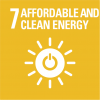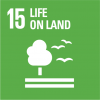Urban Mobility Plan 2009:
- Pedestrianisation of Espolón Boulevard and the surroundings of Mariano Granados Square
- Espolón’s underground car park
- Traffic calming of main streets
- Remodelling of the urban public transport network
- Construction of bike paths
SORIA’S ZERO EMISSION TRANSPORT CORRIDOR 2011-2013
- LIFE+ Programme
- Objectives: to create a sustainable transport corridor at the heart of the city, and develop a new environmental culture
- The zero emissions transport corridor will cross the urban centre, connecting the Duero river banks and Mount Valonsadero, with pedestrian and bike paths
New sustainable urban mobility plan for Soria (2019 - present)
- Purpose: To moderate the demand for the individual use of cars, and promote the use of alternative means of transportation, with lower levels of pollution
- Overall objective: To reduce the current CO2 emission levels by 5%
- Tactical objective: To reduce the total number of car journeys by 9%, as well as their length by 1%
At the European level, the challenges faced by the transport sector point to the establishment of a Single European Transport Area. Where they would develop modern multimodal transport, with safe infrastructure networks. Moreover, the transition towards low-emission mobility would also ensure the affordability and accessibility of transport for all citizens.
- In Spain, transport represents the sector with the highest weight in emissions, bringing together 27% of total CO2 emissions in 2018.
- This sector registered a national increase of +1.4% over the previous year. Source: last GHG Inventory Report 1990-2018 (2020 Edition).
- It is estimated that the trend is increasing due to growth in areas such as employment, population and tourism, which, in turn, affect the city’s traffic.
- Transport activity in Europe is high and will continue to rise. Estimates suggest that passenger transport will increase by 42% and freight transport by 60%, by 2050. (European Commission, 2019).
Mobility and transport are key to the region's economic and social development. Knowing this trend forces us to act quickly, to ensure that this expansion does not negatively impact the environmental quality of the region.
Together we can make Soria a carbon-neutral city by 2030. To accomplish this, the debate must focus on:
- What is the transportation we envision in 2030? What changes need to occur to achieve that vision?
- How to eradicate carbon emissions from the transportation sector.
- How to improve accessibility for people with mobility problems, pedestrians and cyclists in the city.
- How to reconvert our mobility, reduce travel and improve the quality of our public space.
Other initiatives to be considered may include: incorporating electric vehicle charging stations, providing safe pathways for children to walk to school on their own, increasing the efficiency of freight transport (e.g. using logistics hubs and planning more efficient deliveries) so that emissions from courier, parcel and delivery services can be reduced.
Send us your concerns, proposals for actions, regulations, incentives, problems, or needs. All contributions will be valued and considered for the construction of our roadmap.








